This case study illustrates how GAP software can be effectively used in teaching polynomial rings to undergraduate teachers. GAP is relatively new software that has been created recently. By utilizing computer software, many complicated ideas become simpler for students to understand. Software can be strong tools for teaching and learning Mathematics when the right programs are chosen. In this project, focused efforts are made to show how software tools related to Group Algorithms and Programming (GAP) can be used for teaching and applying some important and distinct Mathematical subjects. In this instance, topics like the ring of polynomials are examined as a clear example. This also covers some essential foundational ideas and their basic computational methods. The goal is to make each topic and the teaching strategies easier to grasp as intended.
_02.jpg)
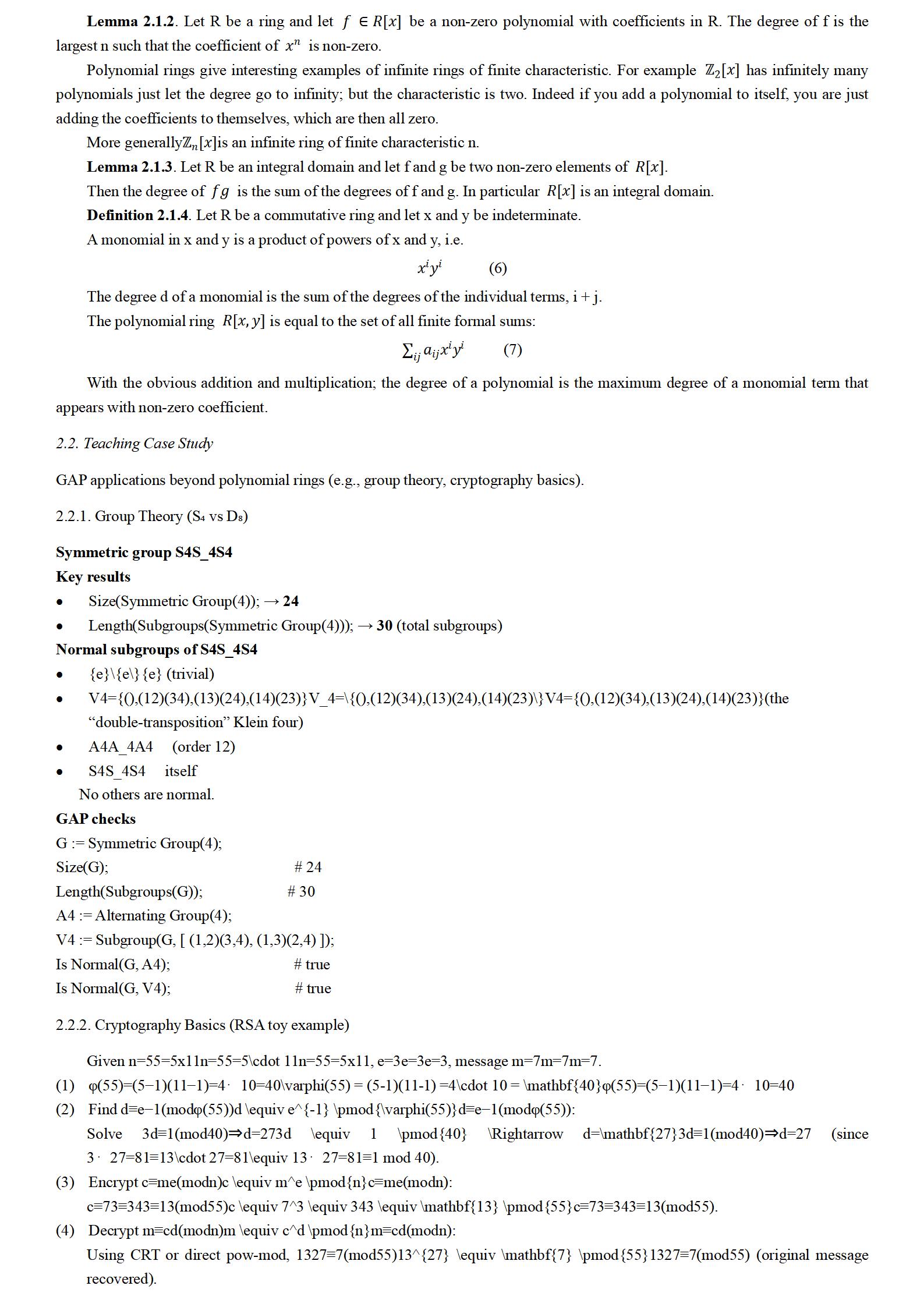
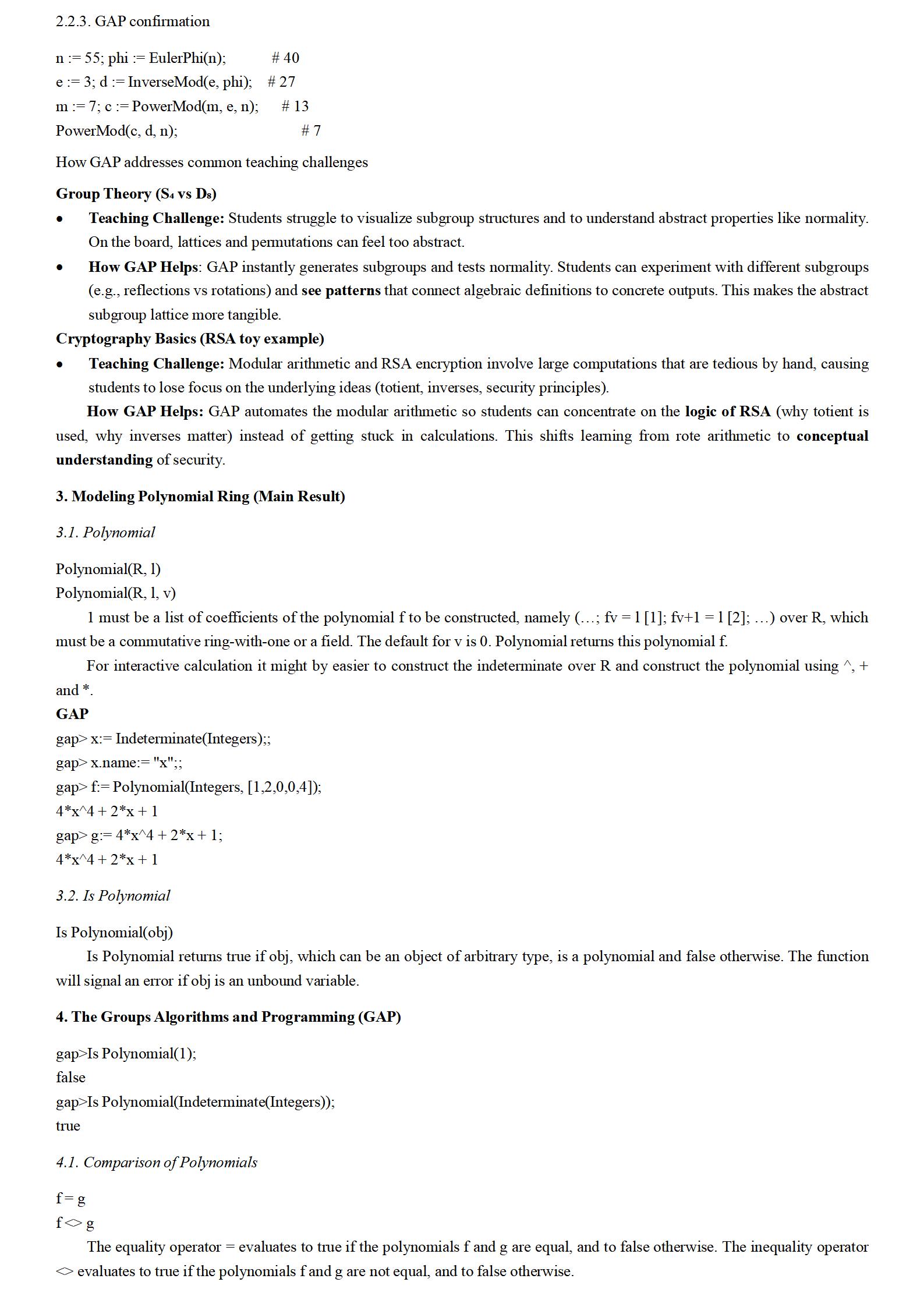
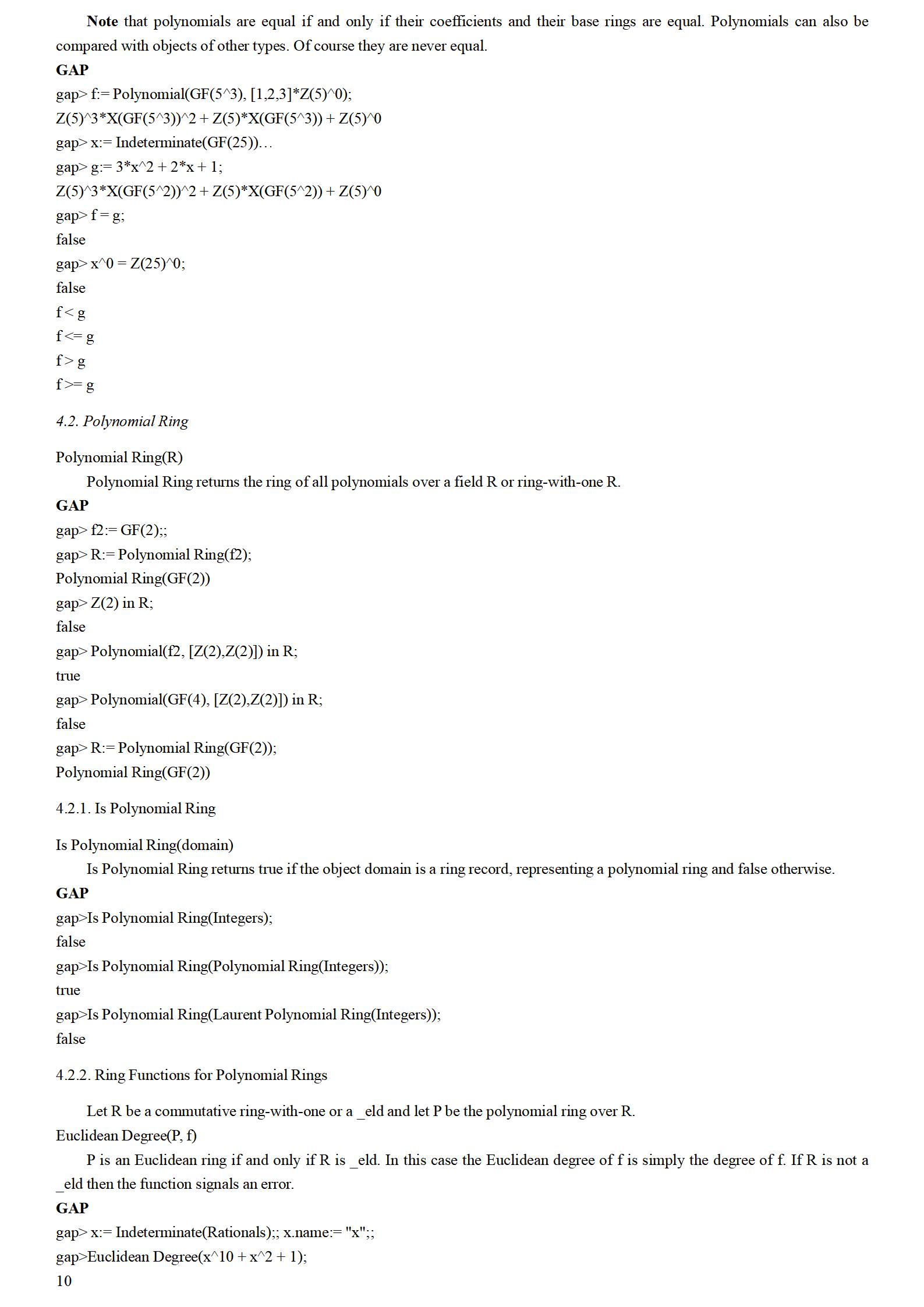
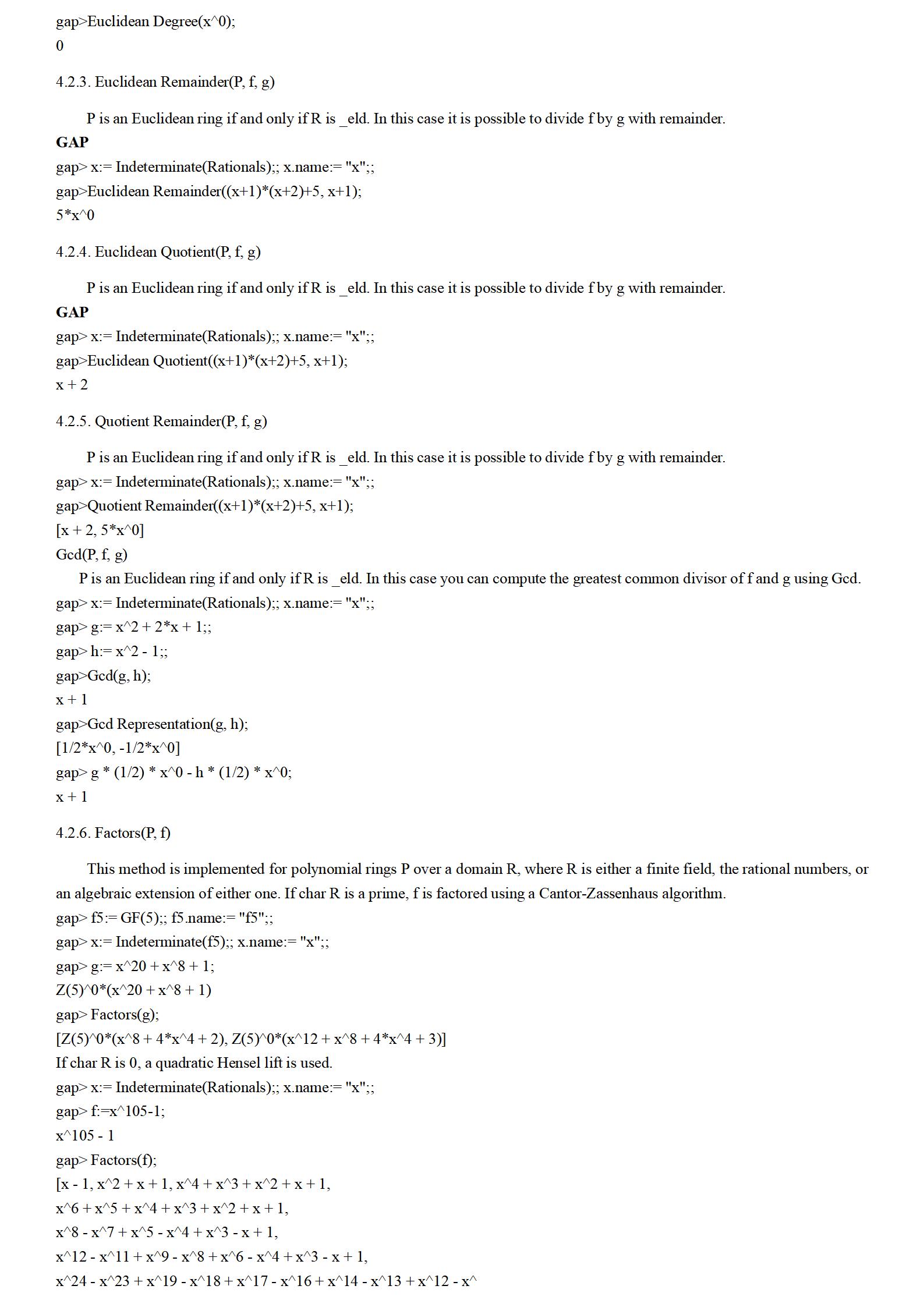
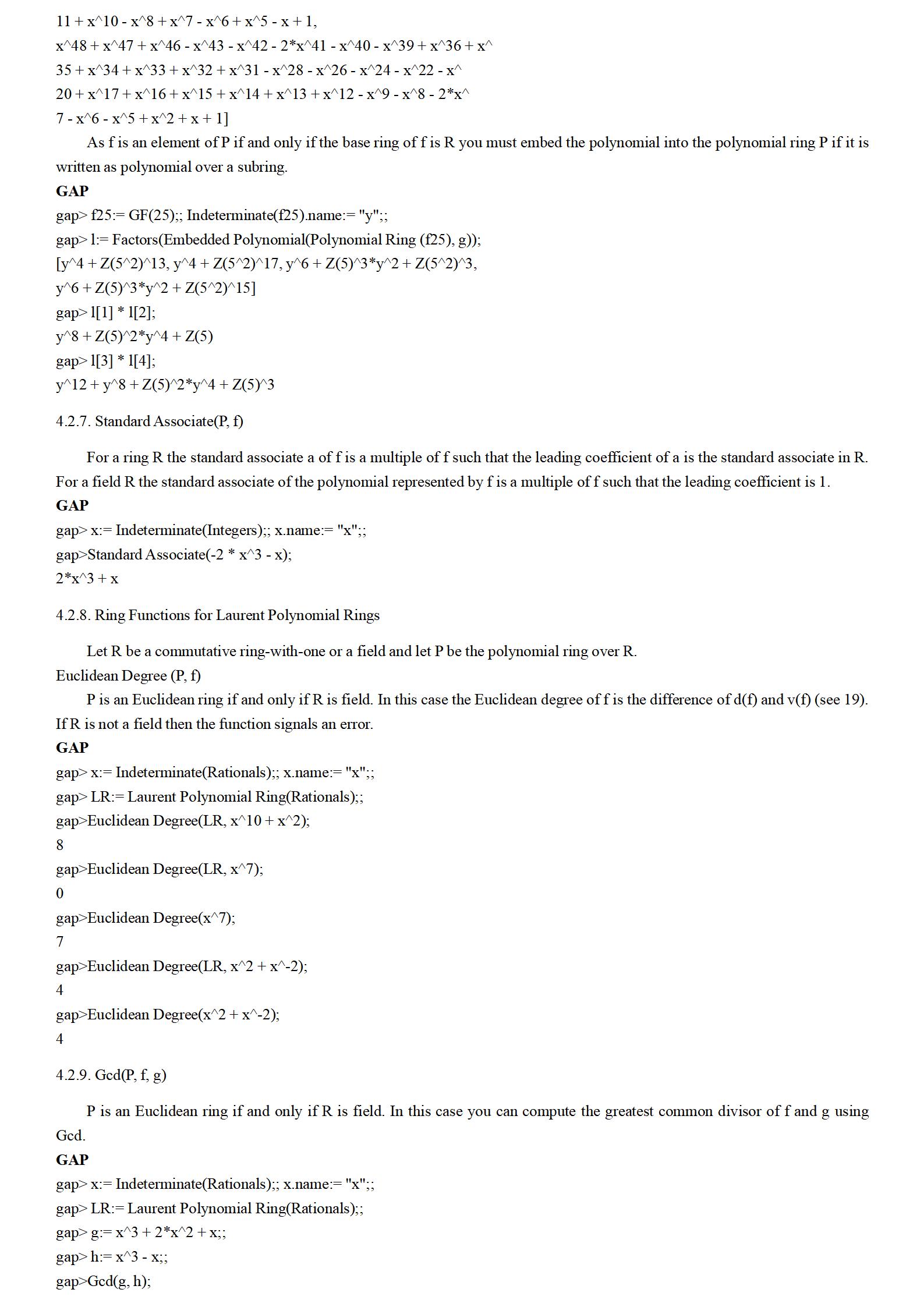
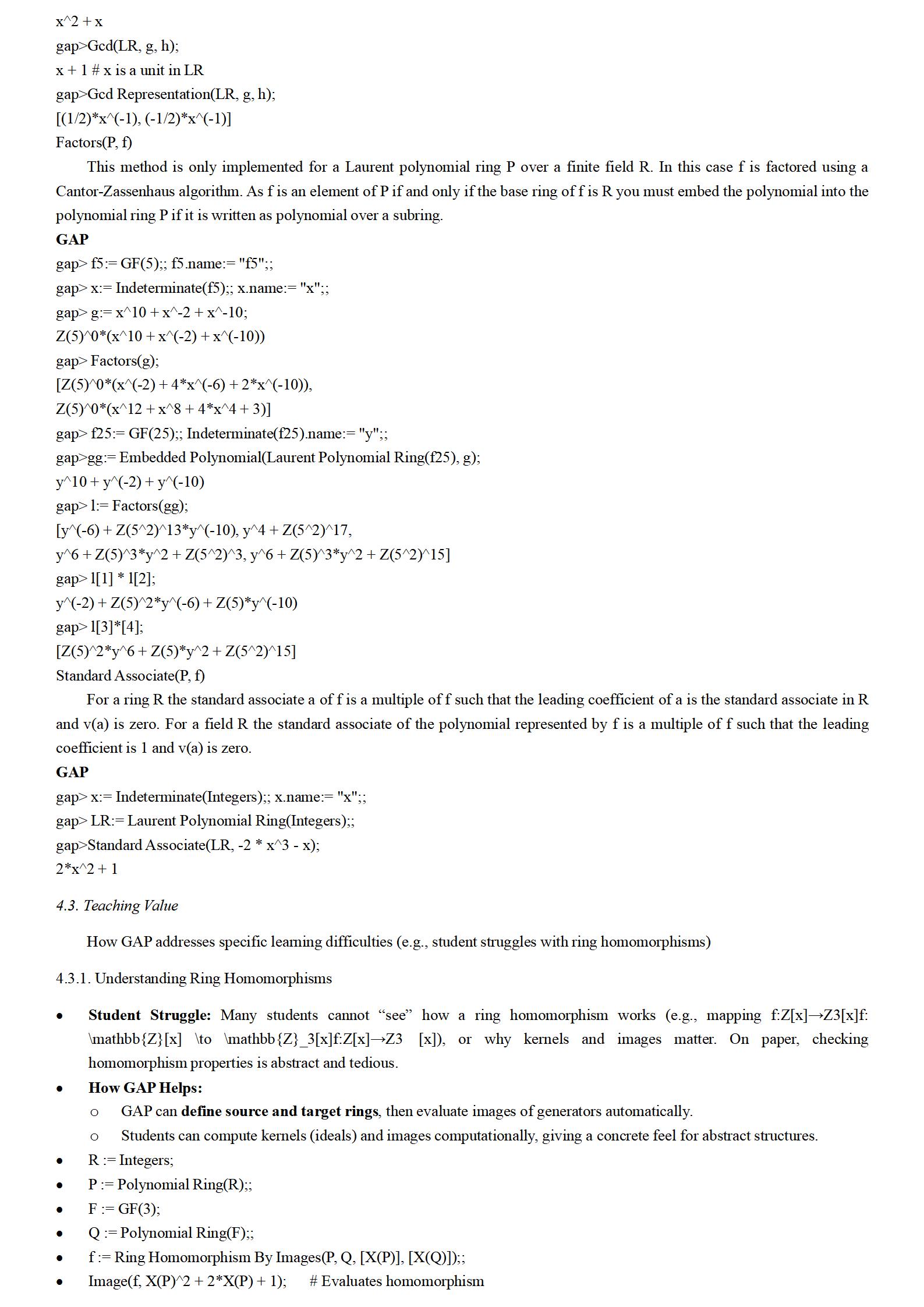
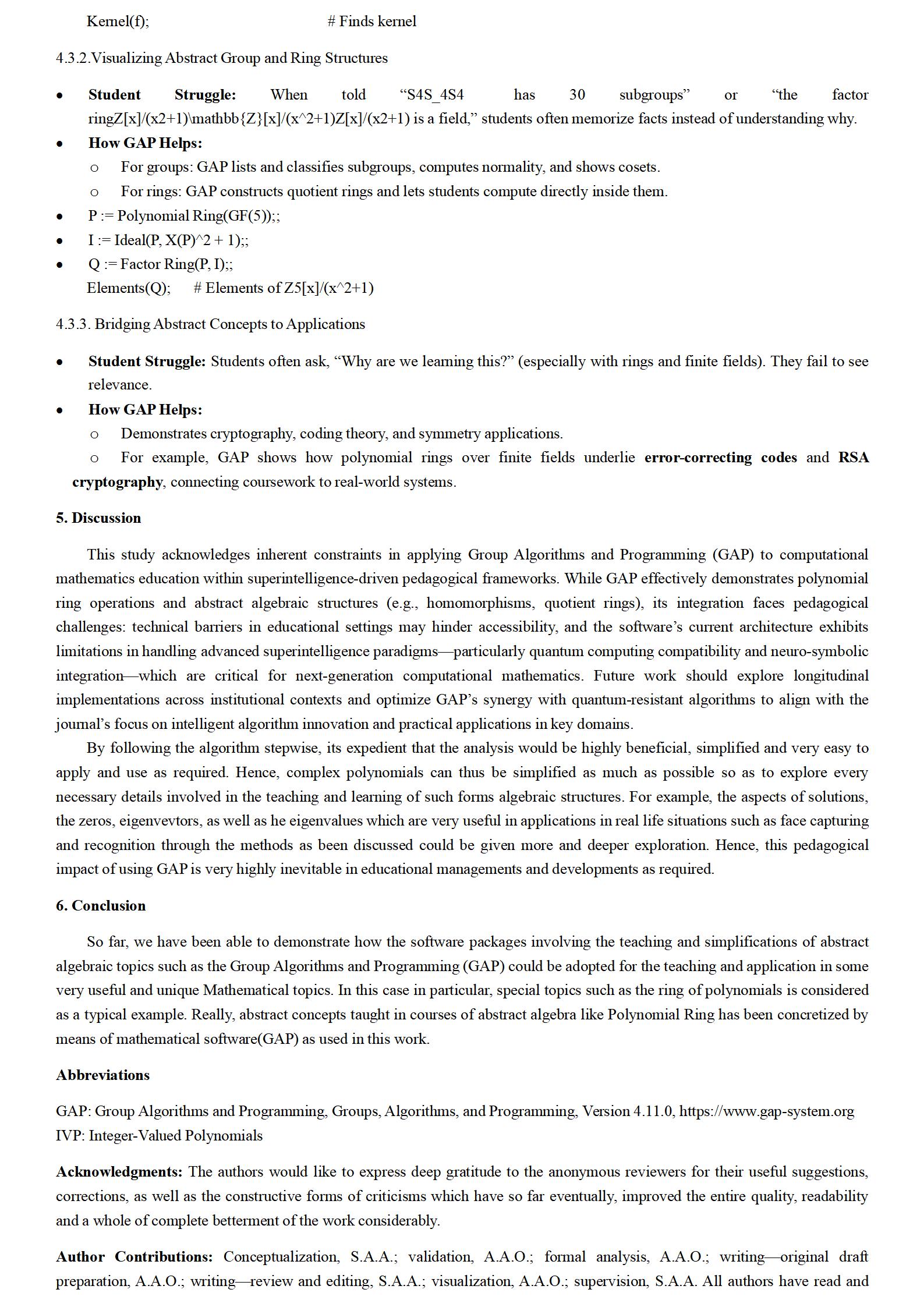

The GAP Group. GAP – Groups, Algorithms, and Programming, Version 4.11.0. Available online: https://www.gapsystem.org (accessed on 1 August 2025).
Adebisi, S.A. On the Solubility of Polynomials of Degree n. Ann. Pure Appl. Math. 2022, 26(1), 19–26.
Kaplansky, I. Fields and Rings, 2nd ed.; University of Chicago Press: Chicago, IL, USA, 1972.
Judson, T.W. Abstract Algebra: Theory and Applications; Orthogonal Publishing L3c: Ann Arbor, MI, USA, 2015.
Tabieh, A.A.S. A Teaching Model of Polynomial Functions’ Learning Outcomes According to the System Approach for High School Students. Int. J. Learn. Teach. Educ. Res. 2020, 19(3), 229–254.
Hulpke, A.; Monks, K.; Ziliak, E. Abstract Algebra in GAP; Colorado State University: Fort Collins, CO, USA, 2011.
Almeida, D.F. Visual Aspects of Understanding Group Theory. Int. J. Math. Educ. Sci. Technol. 1999, 30(2), 159–166.
Ackoff, R.L. Towards a System of Systems Concepts. Manag. Sci. 1971, 17(11), 661–671.
Amalia, E.; Surya, E.; Syahputra, E. The Effectiveness of Using Problem Based Learning (PBL) in Mathematics Problem Solving Ability for Junior High School Students. Int. J. Adv. Res. Innov. Ideas Educ. 2017, 3, 2395–4396.
Barkley, E.F.; Major, C.H. Student Engagement Techniques: A Handbook for College Faculty; John Wiley & Sons: Hoboken, NJ, USA, 2020.
Blum, W. Can Modelling be Taught and Learnt? Some Answers from Empirical Research. In Trends in Teaching and Learning of Mathematical Modelling; Kaiser, G., Ferri, R.B., Stillman, G., Eds.; Springer: New York, NY, USA, 2011; pp. 15–30.
Campbell, S.R.; Zazkis, R. Learning and Teaching Number Theory: Research in Cognition and Instruction; Ablex Publishing: Westport, CT, USA, 2002.
Clements, D.H.; Fuson, K.C.; Sarama, J. The research-based balance in early childhood mathematics: A response to Common Core criticisms. Early Child. Res. Q. 2017, 40(3), 150–162.
Curto Prieto, M.; Orcos Palma, L.; Blázquez Tobías, P.J.; León, F.J.M. Student Assessment of the Use of Kahoot in the Learning Process of Science and Mathematics. Educ. Sci. 2019, 9(1), 55.
Mucciconi, M. Orthogonality of Spin q–Wittaker Polynomials. arXiv 2025, arXiv:2502.00478.
Kennedy, J. Some Polynomial Theorems; Mathematics Department, Santa Monica College: Santa Monica, CA, USA.
Semaev, I.; Tenti, A. Probabilistic analysis on Macaulay matrices over finite fields and complexity of constructing Gröbner bases. J. Algebra 2021, 565, 651–674.
Nakato, S. Non-absolutely irreducible elements in the ring of Integer-valued polynomials. arXiv 2020, arXiv:1910.10278.
Ibrahim, M.A.; Agboola, A.A.A.; Hassan-Ibrahim, Z.; Adeleke, E.O. On NeutroQuadrupleRings. In Theory and Applications of NeutroAlgebras as Generalizations of Classical Algebras; IGI Global: Hershey, PA, USA, 2022; pp. 29–57.
Agboola, A.A.A.; Davvaz, B.; Smarandache, F. Neutrosophic quadruple algebraic hyperstructures; Ann. Fuzzy Math. Inform. 2017, 14(1), 29–42.
Akinleye, S.A.; Smarandache, F.; Agboola, A.A.A. On Neutrosophic Quadruple Algebraic Structures. Neutrosophic Sets Syst. 2016, 12, 122–126.




